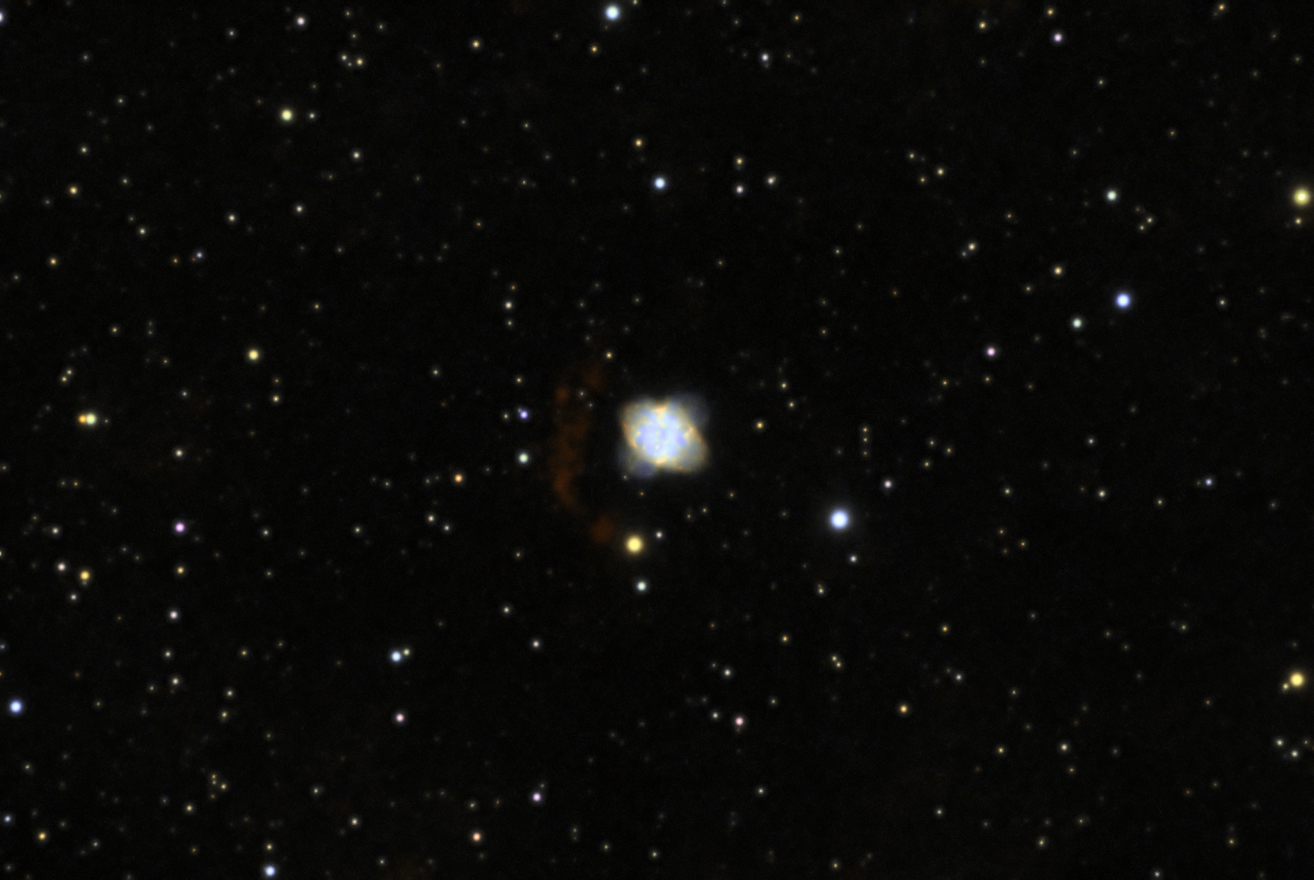Also known as PN G116.2+08.5 this PNe can be found in the constellation Cepheus (RA: 23h 31m 51.4s, Dec 70° 22’ 9.3”) at a distance of 2254 lightyears. In this image north is to the right and east is to the bottom.
Taken between Oct 2020 and Nov 2020, this image is composed of Ha for the red, N2 for the green and O3 for the blue channels for the whole image. I didn’t really have time to get RGB data for the stars. After linear fitting the Ha and N2 to the O3 I have blended the images according to the following scheme: Red = Ha * (1-N2), Green = N2*(1-Ha), Blue = O3.
The idea here is to make the Ha strong in the red, where the N2 is weak and the N2 strong in the green where, the Ha is weak. Hopefully, this has allowed the N2 and Ha structures to be seen together, rather than having the N2 swamped by the Ha.
The arc of material that runs from the SE to the SSW is extremely faint in my raw data, but it does exist. Its presence has been detected by professional astronomers (Chih-Hao Hsia et. al, March 13th 2020, “Discovery of Extended Structures around Two Evolved Planetary Nebulae M 2-55 and Abell 2”).
Because it was so faint (just barely above the noise in my data) its presentation here has used a bit of artistic license. It shows up (just about) in the Ha, weaker in the N2 and not at all in the O3. I wanted to show this structure as it is believed to be formed from the earlier AGB wind material being compressed by the motion of the PNe through space.
On the PNe itself you can clearly see the two bipolar lobes. The lobe aligned approx. NE to SW is approx. 67.2” x 36.6” and the other, aligned approx. NW to SE is 65.5” x 34.3”. This suggests they formed within a short period of time. Where the two cross one and other we can see lumpy features, esp. in the four corners. These regions may be projection features where the two lobes interact. For some reason, the NW to SE lobe is more prominent in O3 than either Ha or N2, the opposite to the other lobe. In either case, both have a well-defined edge.
The central region is large and probably carved out by increasing thermal pressure as the PNe evolved. This object is thought to be quite old. Gaia DR2 data suggests an age of 92,191 years old. IR observations show the central cavity to be full of dust. This may be why its so difficult to make out the central star which has a mass of ~0.5 solar with a surface temperature of 55,000 K and is about 35 times brighter than our own Sun.


